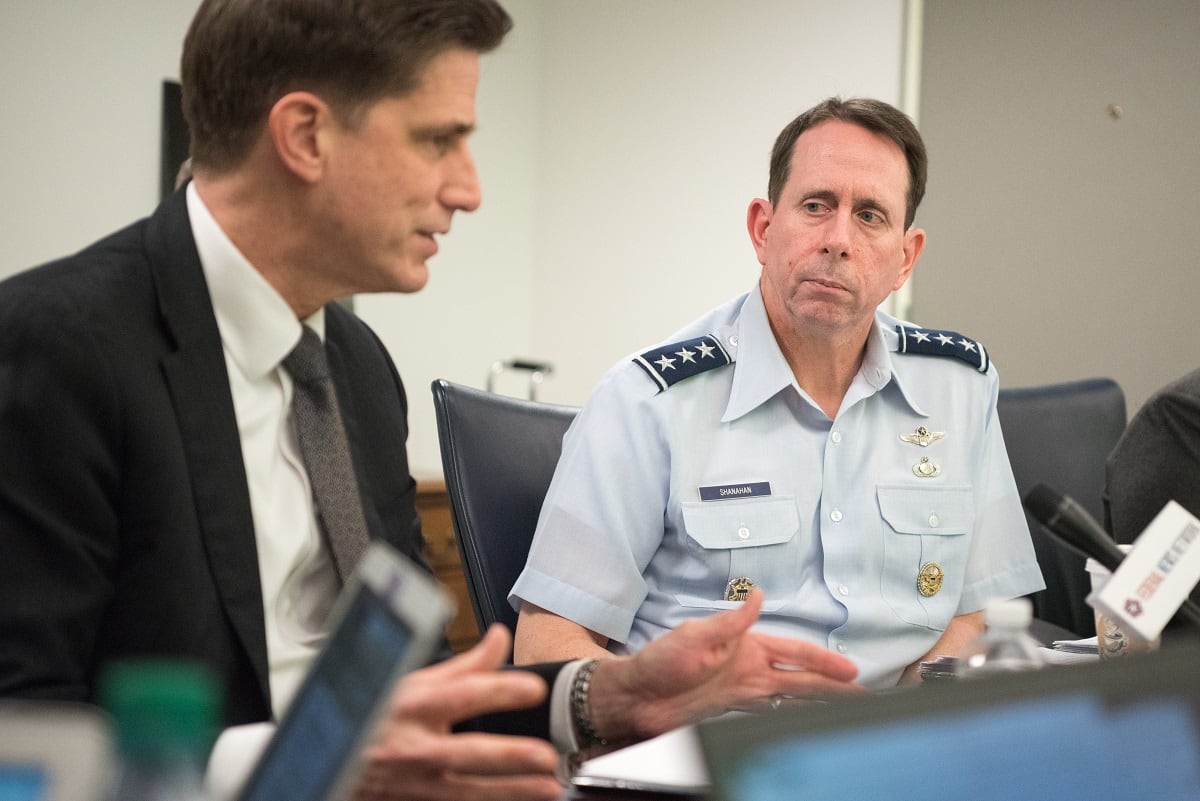The Pentagon’s artificial intelligence hub is shifting its focus to enabling joint war-fighting operations, developing artificial intelligence tools that will be integrated into the Department of Defense’s Joint All-Domain Command and Control efforts.
“As we have matured, we are now devoting special focus on our joint war-fighting operation and its mission initiative, which is focused on the priorities of the National Defense Strategy and its goal of preserving America’s military and technological advantages over our strategic competitors,” Nand Mulchandani, acting director of the Joint Artificial Intelligence Center, told reporters July 8. “The AI capabilities JAIC is developing as part of the joint war-fighting operations mission initiative will use mature AI technology to create a decisive advantage for the American war fighter.”
RELATED

That marks a significant change from where JAIC stood more than a year ago, when the organization was still being stood up with a focus on using AI for efforts like predictive maintenance. That transformation appears to be driven by the DoD’s focus on developing JADC2, a system of systems approach that will connect sensors to shooters in near-real time.
“JADC2 is not a single product. It is a collection of platforms that get stitched together — woven together ― into effectively a platform. And JAIC is spending a lot of time and resources focused on building the AI component on top of JADC2,” said the acting director.
According to Mulchandani, the fiscal 2020 spending on the joint war-fighting operations initiative is greater than JAIC spending on all other mission initiatives combined. In May, the organization awarded Booz Allen Hamilton a five-year, $800 million task order to support the joint war-fighting operations initiative. As Mulchandani acknowledged to reporters, that task order exceeds JAIC’s budget for the next few years and it will not be spending all of that money.
One example of the organization’s joint war-fighting work is the fire support cognitive system, an effort JAIC was pursuing in partnership with the Marine Corps Warfighting Lab and the U.S. Army’s Program Executive Office Command, Control and Communications-Tactical. That system, Mulchandani said, will manage and triage all incoming communications in support of JADC2.
Mulchandani added that JAIC was about to begin testing its new flagship joint war-fighting project, which he did not identify by name.
“We do have a project going on under joint war fighting which we are going to be actually go into testing,” he said. “They are very tactical edge AI is the way I’d describe it. That work is going to be tested. It’s actually promising work — we’re very excited about it.”
“As I talked about the pivot from predictive maintenance and others to joint war fighting, that is probably the flagship project that we’re sort of thinking about and talking about that will go out there,” he added.
While left unnamed, the acting director assured reporters that the project would involve human operators and full human control.
“We believe that the current crop of AI systems today [...] are going to be cognitive assistance,” he said. “Those types of information overload cleanup are the types of products that we’re actually going to be investing in.”
“Cognitive assistance, JADC2, command and control—these are all pieces,” he added.
Nathan Strout covers space, unmanned and intelligence systems for C4ISRNET.








